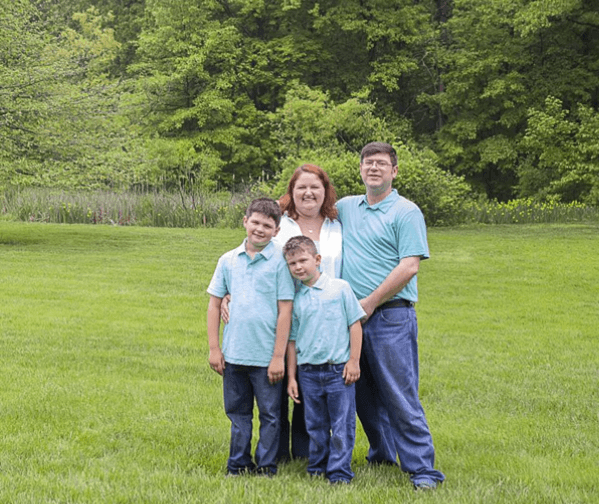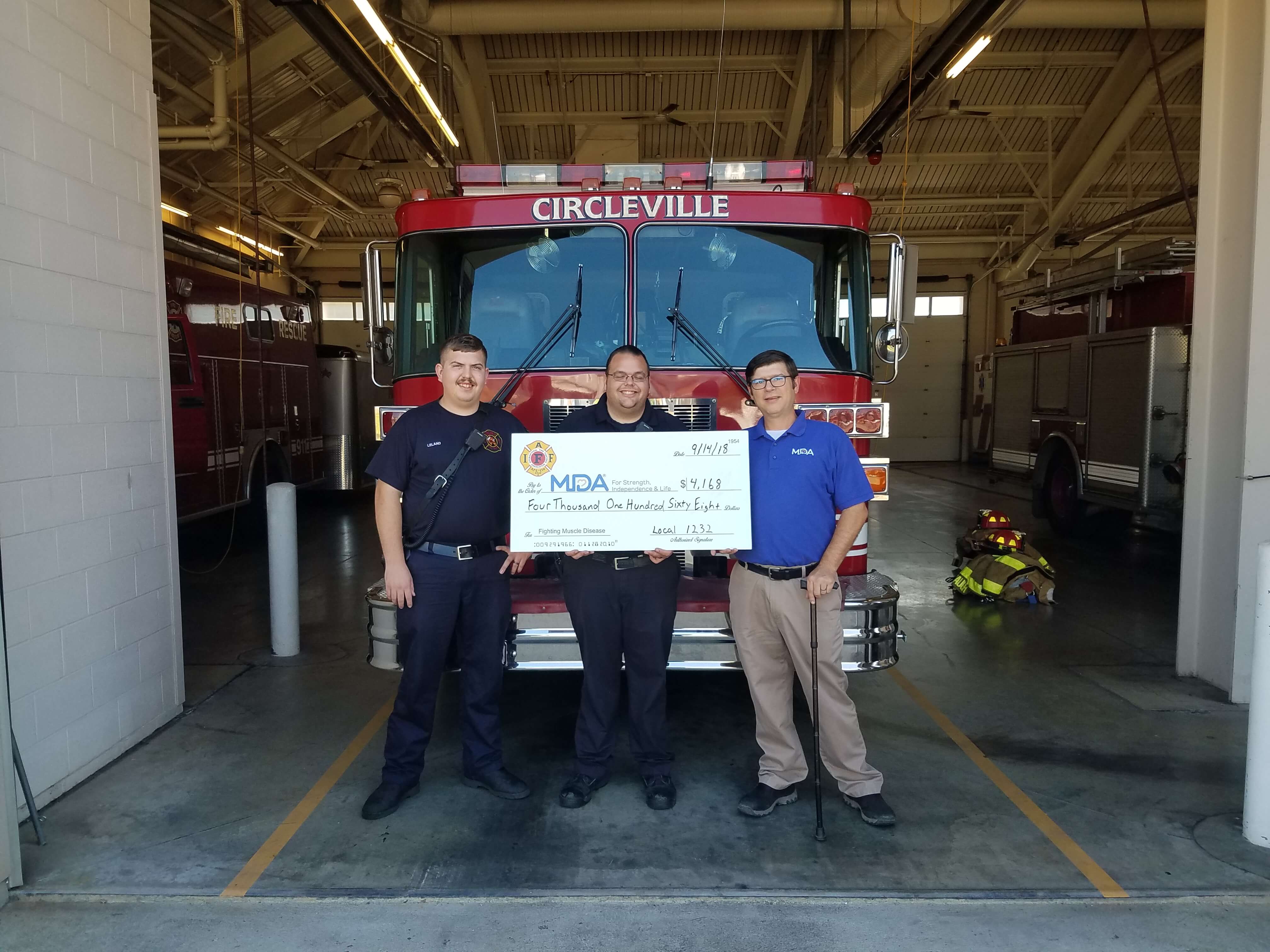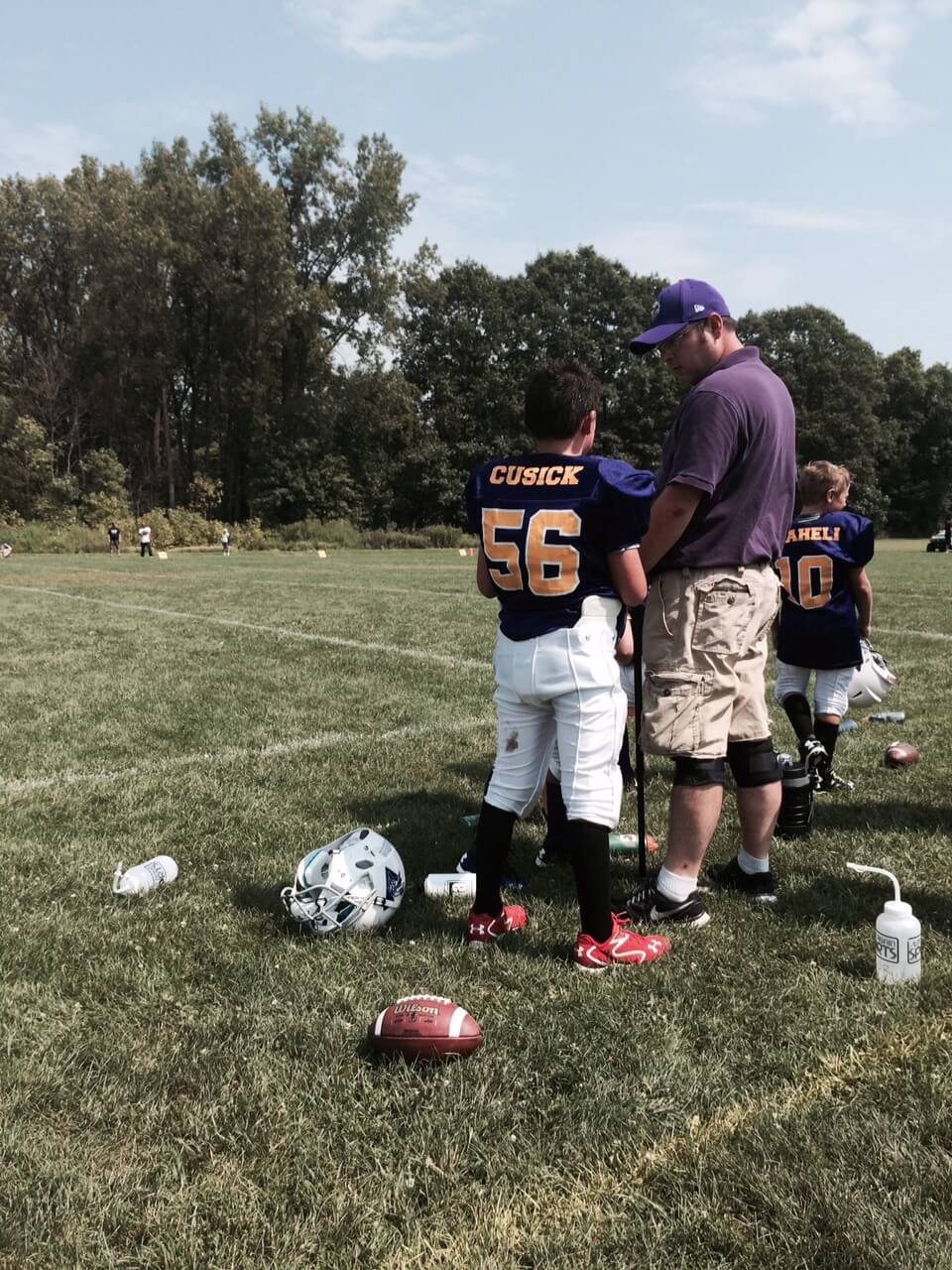Patrick Cusick’s journey with MDA — and with muscular dystrophy — started 12 years ago, in, of all places, a life insurance office.

Twenty-nine at the time, the Ohio native and his wife were expecting their first child, and making preparations as parents (or soon-to-be parents) do. Securing life insurance meant taking some medical tests; Pat’s came back indicating his liver enzymes were elevated. A biopsy showed his liver was healthy, but cardiac test results prompted a doctor to order a muscle biopsy.
Any symptoms of disease, Pat says, “had been kind of small — not really something you would’ve picked up on except in retrospect.”
The diagnosis — Becker muscular dystrophy (BMD) — was a difficult one for Pat to accept.
“To be honest, I spent a couple of years I wish I had back,” he says. “I went through some denial, ignoring the situation, feeling depressed. But these are typically the things people go through when they get a diagnosis; it’s natural, and OK to feel like that.”
And it didn’t last. Especially not when Pat got a call from Dr. Jerry Mendell at Nationwide Children’s Hospital in Columbus, Ohio, about a new gene therapy trial — at the time, the first of its kind.
“I was the first person with BMD to receive treatment, and the seventh overall in the world,” Pat says. He was making history, for other patients but also for himself.

For weeks and months during the trial, Pat would visit the MDA Care Center at Nationwide Children’s Hospital. He started to pay attention in the waiting room.
“I’d gone four or five years without meeting or speaking to another person with a muscle disease,” he says. “But being in the waiting room every week or every other week or once a month, just seeing parents of children and other patients … I could tell who had been there before and who was waiting on a diagnosis. I started asking myself, ‘How can I help so these folks don’t have to go through that?’
“That made me understand how important that research was, and what MDA was doing.”
After his first clinical trial, Pat signed on for another between Nationwide and the Ohio State University Hospital. Next, he volunteered at MDA Summer Camp, and the number of people he knew with muscle disease, he says, took off.
So did a new career.

Pat has a degree in journalism and a background in sales, which he thought could apply to fundraising. MDA agreed — Pat is now the executive director of the Columbus MDA office, and a friend to families facing new diagnoses like his own.
“The best thing is meeting parents of boys with Becker,” he says. “I try not to give advice — just share my own experience. Being a grown man who has the same diagnosis and has got a job and is married and has kids … I hope parents think, ‘Maybe it’s not as bad as we thought. Maybe there is another path forward.’”
Pat regularly connects with families on the phone and in person. He gets asked a lot of questions about exercise and nutrition, how to find specialists, how he navigated college, his experiences with supplements and steroids and clinical trials.
“I don’t give medical advice,” he says, “but it’s gratifying to me to be able to be that resource for people. It changes the conversation.”
He tries to connect families within the MDA community, too, so they have a wider support system. And most of all, he encourages families to support loved ones living with BMD in pursuing their passions.
“It’s important to be careful, but try new things,” he says. “I coach tackle football and walk with a cane. I can’t physically show [the plays], but I’m good at explaining things that are interesting to me. Don’t sell yourself or your child short about what you’re able to accomplish.”
